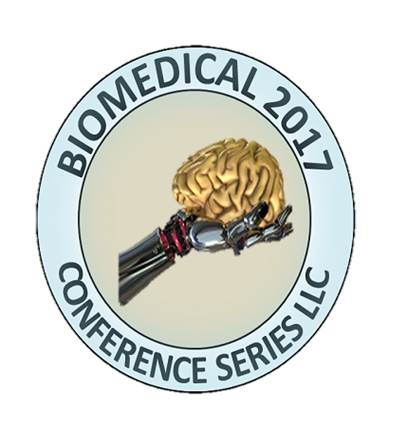
Yaw Opoku-Damoah
University of Chinese Academy of Sciences, China
Title: Nanotheranostic lipoprotein-inspired zinc oxide-bound Paclitaxel for enhanced cancer photochemotherapy
Biography
Biography: Yaw Opoku-Damoah
Abstract
The emergence of nanotechnology comes with a grave concern about efficacy, toxicity and side effects. Even though chemotherapy, surgery and radiation therapy have been able to provide valuable assistance in clinical treatment, there is a pressing need for novel bio-friendly drug delivery systems which can eliminate all the constraints related to the traditional treatment regimen. This present work encompasses drug targeting via reconstituted high-density lipoproteins, combined chemotherapy and photodynamic therapy as well as in vitro nano inspired theranostics. We successfully synthesized zinc oxide-bound paclitaxel (ZnO/PTX) and packaged the photochemotherapeutic formulation into high-density lipoproteins via one-pot synthesis. The final rHDL/ZnO/PTX nanomedicine had a characteristic near-spherical shape and a particle size of 164.9±2.8. A zeta potential of-19.94±1.73 as well as percent drug loading of 12.75% demonstrated that the nanoformulation could be an efficient in cancer drug delivery system. FTIR analysis proved that ZnO was successfully bound to PTX via hydrogen bonding before subsequent co-encapsulation in the lipid core. We further determined the UV absorbance and fluorescence spectra of our formulation. The PTX and ZnO drug release pattern was assessed by two methods and analyzed by HPLC and ICP-OES analysis, respectively. The results suggested that ZnO could remain intact in neutral solutions but could slightly dissolve in acidic and harsh dissolution media to trigger the collapse of the nanoparticle. The in vitro antitumor efficacy on adenocarcinomic human alveolar basal epithelial cells (A549 cells) was evaluated by MTT assay and flow cytometry. The results suggested that the terminal nanoparticle could control the release of drugs and maximize the cancer cell toxicity. The final nanoparticles irradiated with UV light proved to be the most efficient treatment relative to the other groups. It was also deduced that UV light may be used for photodynamic therapy as an improvement for the antitumor efficacy of rHDL/ZnO/PTX. This was further confirmed by the quantitative and qualitative detection of ROS which serves as an apoptotic tool. Confocal laser scanning microscopy was used to detect the presence of ROS with the help of DCFH-DA ROS detection kit, and the resulting images suggested that rHDL/ZnO/PTX could produce significant quantities of reactive oxygen species. Flow cytometry analysis confirmed that the fluorescence was more conspicuous in cells that were irradiated with UV light as compared to cells incubated with rHDL/ZnO/PTX and rHDL/PTX. We further employed Annexin V FITC Apoptosis kit and flow cytometry to evaluate the existence of apoptotic and necrotic cells after incubating drugs with various drug formulations. We also utilized the ZnO fluorescence to track intracellular trafficking with both active and passive targeting. This study further confirmed that rHDL/ZnO/PTX could be harnessed for UV light-mediated photochemotherapy while ApoA-I could help facilitate the shuttling of drugs into cancer cells via SR-BI receptors. In addition, we demonstrated that ZnO could be used as a potential in vitro theranostic moiety while mediating photodynamic therapy and pH-responsive drug delivery. Herein, we were able to establish that our nano-based in vitro theranostic platform could be a robust, safe, stable and efficient nanodelivery system which could be developed for future cancer therapy and diagnosis.

